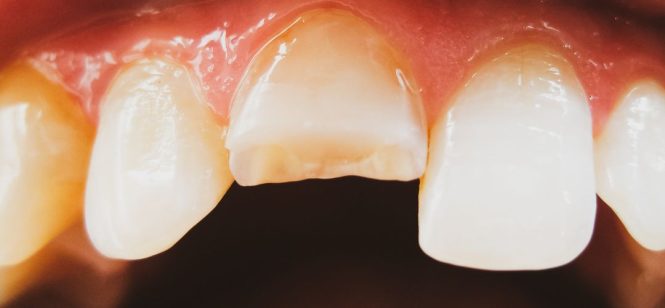

Dental care for chipped or cracked teeth is a significant concern for many individuals. A chipped or cracked tooth can impact both the function and appearance of your smile, leading to discomfort and potential complications if not addressed properly. This comprehensive guide explores effective solutions to repair the damage and strategies to prevent future problems.
Understanding the Issue: Chipped and Cracked Teeth
Causes of Dental Damage
Many factors can lead to chipped or cracked teeth. Accidents, biting down on hard objects, or grinding your teeth (bruxism) can create fractures. Other causes can include poor oral hygiene habits or clenching. A thorough understanding of the cause can help in choosing the right course of action for treatment.
Symptoms and Potential Complications
Common symptoms of chipped or cracked teeth include pain, sensitivity to hot or cold temperatures, difficulty chewing, and noticeable cosmetic changes. These issues can negatively impact your oral health and well-being and escalate to more serious problems if not addressed.
Diagnosis and Treatment Options
Initial Dental Evaluation
When you experience a chipped or cracked tooth, it’s crucial to see a dentist for a comprehensive evaluation. A dentist can assess the severity of the damage, identify the underlying cause, and recommend the most appropriate treatment plan. Proper diagnosis is crucial to preventing potential future issues.
Non-Surgical Repair Procedures
In many cases, simple and less invasive procedures can effectively repair chipped or cracked teeth. Dental bonding is a popular technique that involves using a tooth-colored resin to fill and reshape the damaged area. It’s a cost-effective and relatively quick procedure that can quickly improve the look of a chipped tooth. Similarly, dental fillings can also repair minor cracks.
Surgical Repair Procedures
For more substantial damage or cracks that extend deep into the tooth structure, more extensive procedures might be necessary. Porcelain veneers are thin, custom-made shells that are bonded to the front of the tooth to restore its shape and appearance. Crowns are another option, covering the entire tooth to provide structural support and protection.
Preventing Future Dental Damage
Oral Hygiene Practices
Maintaining good oral hygiene is key to preventing dental issues. Brushing twice daily and flossing regularly can help remove food particles and plaque, reducing the risk of tooth decay and damage. Regular dental checkups are essential.
Protective Measures
Wearing a mouthguard during sports or other activities that might involve a risk of injury can prevent further damage. Avoiding hard foods and candies can minimize the chances of chipping or cracking. Be mindful of the types of food you’re eating.
Addressing Underlying Issues
Underlying conditions like bruxism can contribute to dental problems. If you grind or clench your teeth, consulting a dentist or a sleep specialist can help identify and address the cause and provide possible solutions.
Managing Pain and Discomfort
Immediate Care
In the case of severe pain following a chipped or cracked tooth, use cold compresses to reduce swelling. Avoid chewing on the affected side and consult a dentist as soon as possible. Don’t ignore the issue.
Pain Management Techniques
Over-the-counter pain relievers can temporarily alleviate discomfort. However, it’s vital to seek professional medical advice if the pain persists or worsens. Following a dentist’s recommendations can ease discomfort and prevent the situation from escalating.
Long-term Management
Long-term strategies may include adjustments to diet or lifestyle to prevent further issues. A tailored treatment plan should address these needs for the best results.
Long-Term Maintenance and Follow-Up
Post-Treatment Care
Proper care after any dental procedure is crucial for successful outcomes. A dentist will provide detailed instructions on how to care for the repaired tooth, ensuring its durability and longevity. They’ll likely provide tips on oral hygiene and dietary adjustments.
Regular Checkups
Regular dental checkups are essential for monitoring the condition of the repaired tooth and addressing any potential complications. Consistency is key in your overall oral health.
Addressing Underlying Causes
If the issue stems from a bruxism problem, addressing it with a custom mouthguard or other therapies can significantly reduce future risk of damage. Working closely with a dentist or other medical professionals will ensure appropriate management.
Additional considerations and future perspectives on dental procedures
Specific dental procedures and their effectiveness
Tips and tricks for proper dental care
Latest research on oral health and preventative care
Frequently Asked Questions
What are the most common causes of chipped or cracked teeth?
Accidents, biting down on hard objects, and bruxism are frequent culprits. Other causes include excessive teeth grinding, poor oral habits, and the consistent consumption of hard foods. Avoiding foods like hard candies and consistently biting into hard objects may help minimize the risk of future chipping or cracks. A thorough dental evaluation is essential to pinpoint the exact cause.
What are the options for repairing a chipped or cracked tooth?
Different procedures are available depending on the severity of the damage. For minor chips, bonding or fillings might suffice. More significant damage may necessitate porcelain veneers or crowns to restore the tooth’s structure and aesthetics. A dentist will assess the specific situation and recommend the best approach.
In conclusion, addressing chipped or cracked teeth promptly is crucial for maintaining oral health and preventing further complications. Professional dental care, including procedures like bonding, porcelain veneers, or crowns, can restore the tooth’s function and aesthetic appeal. Proactive preventive measures, like using protective mouthguards during sports or avoiding hard foods, are also vital. By understanding the various treatment options and practicing good oral hygiene, you can significantly minimize the risk of future dental issues and ensure a healthy smile. Schedule an appointment with your dentist today to discuss your concerns and explore the best course of action for your specific needs.